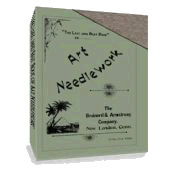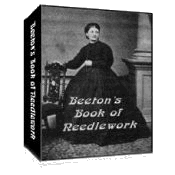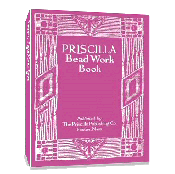[]Subscribe To This Site
10 More Napkin Folding Techniques
Continue:
Here are 10 more napkin folding techniques that will serve you well. Your guests will be amazed at your ingenuity and your creativity. Give them a try!
-

- The Shell (Fig. 1, below). — This is another very pretty and marked device. Lay the napkin flat on a table, and fold two sides to meet in the centre longways, like Fig. 5; fold it across the centre, and bring the side A A to meet the side B B. The hems are kept inside in this fold. The long narrow piece thus formed must be folded in six equal pieces, and pressed close. It now resembles Fig. 13.

Partly open it, and turn down the tops of the foldsAll along where the fold is double, in the manner shown by Fig. 4. some can turn these down better if the lower end is kept close like a fan. When these corners are turned down draw the end together, and pinch it firmly as a fan, and then set it upright on the plate, the two end folds level with the plate, like Fig. 1. If properly done it stands well. It is a very pretty addition to put alternately in each scallop of the shell a small flower and a leaf. Scarlet geraniums look exceedingly well.pieces, and pressed close. It now resembles Fig. 13.

- The Victoria Regia — Fold a serviette in half, and again in half, lengthways, keeping the hems to the edge; fold it a third time, also lengthways; then set it in twelve folds, like Fig. 13, as the shell was made, only the serviette is now only half the width, and there are twice as many folds. The corners are turned down (Fig. 4) as they were for the shell, beginning with the first hem; undo the plaits as little as possible; turn the first hem completely back, to make the first row of petals; turn back the second hem the same way, not quite so far; then turn down the first fold, which comes next, to form petals to meet those already made. The last fold is not turned down (see Fig. 9). pieces, and pressed close. It now resembles Fig. 13.

Bring the two ends of the serviette together to form a round; the inner edges are thus forced up as a heart. A rosette is the figure formed, and the rosette represents the Victoria Regia (Fig. 2). The serviette must be reduced to keep the round unbroken. The bread is not placed in or under it, but a few small flowers, or even the head of a small rose arranged in the centre. This shape is difficult to make, and requires very stiff damask. The petals need to be nicely set with the fingers, to resemble it. There are three rows of petals turned down, and one upright edge left, although only two rows are shown in Fig. 9.pieces, and pressed close. It now resembles Fig. 13.

- An Easy Way of folding a Variety of the Shapes first described. — Fold the serviettes in half and form a point, and roll both ends up, over, as in Fig. 1A; bring the end B in each of these rolls to A, and represent Fig. 14; lay this on the table with the rolls under, and raise the point upright at A (Fig. 26), and take the part B and turn it up in the way shown by Fig. 25; then curve over the points. The whole is represented by Fig. 24.

With a slight variation Fig. 10 may be formed; turn down half of the point and slip in the bread, as in Fig. 19.

- A Chestnut Pocket. — Fold a serviette in half one way, and then again in half the other way; make the crease; open it. There will be a figure of a cross upon it by this means, like Fig. 6A. Fold the four corners exactly to the centre; crease them flat; turn it over on the other side, and again fold the four corners to the centre, like Fig 7A. Turn this over again, and place it on the plate. Slip some of the hot chestnuts inside every corner (See Fig 12).
- The Pocket — To fold the serviette this way, at the first do it exactly like the chestnut pocket. When it is turned over, after the second folding, with the hemmed edges showing, once more turn down the four comers to the centre, turn it over again, and slip the bread under the four lop pieces, pressing them down close over it. (See Fig 7.)

- The Tulip is a very effective figure in damask, and yet simple enough in it’s folding. It requires the serviette to be very stiff. Fold the four corners to the centre like Fig. 6A; again fold the four corners to the centre like Fig. 6; a second time, a third time, a fourth, and a fifth turn the corners into the centre. The turning down should be very exact. Then take the four corners uppermost, and dexterously turn them back, as in Fig. 2;continue turning the corners back this way, leaving only the centre ones unturned; then nip up the under part of the serviette in the fingers, and shape it into a champagne glass. The turned-back corners form the tulip petals, and hang down in quite long points, like rabbits' ears.

- The Pyramid is not quite so easy. Fold the napkin in half lengthways, one side within an inch of the other, as in Fig. 17A; then make seven plaits in it in the way shown in Fig. 13, which is smaller in proportion than the serviette fold, simply for the economy of space; take a paper-knife and, as it were, crimp up the serviette the narrow way, folding it in and out the width of the knife; stand it upright and join it round into a pyramid like Fig. 19.

- To fold Fig. 27. Fold the serviette four times lengthways. Fold down one end as observed at A in Fig. 3 — not to the centre by a couple of inches. Fold again at the dotted line B. Roll the end A as shown at C. Fig. 17 illustrates the process. Fig. 27 shows the complete design.

- The Tiara. — Double the serviette four times lengthways. Fold down each corner, as shown in Fig. 8. Then fold by the lines across C D, and represent Fig. 22. Push the folds close together. Fold in half at the centre line, and tuck in the corners. Open the design by placing the hand inside. It must resemble Fig. 21 when complete.

- A Pair of Slippers — Fold a serviette four times lengthways, and then like Fig. 1A. Fold down the point to A A; then roll the two ends on the slant, as shown in Fig. 23. Turn them over, holding the tops of both in the fingers; draw the part of the serviette which crosses the rolls tightly down, thrusting the tops of the rollsthrough, and make the slippers, Fig. 16.

- The Helmet. — Fold a serviette in half lengthways. Roll up the four corners slanting, like A and B in Fig. 23. Fold the four together, like Fig. 20. Bring A and, B together, letting the four corners project. Push back the centre, and hollow it to resemble Fig. 11.

- The Fan. — This is a very pretty way of folding (see Fig. 15). Fold first as for the shell (Fig. 1), but do not pick out the edges. Place it in a champagne glass in the manner shown in the diagram.
For more napkin folding techniques, see Napkin Folding, Pg. 1
Return to top of Napkin Folding, Pg. 2.
Return to Victorian Christmas page.
Return to Home page.



 433 pages!
433 pages!

